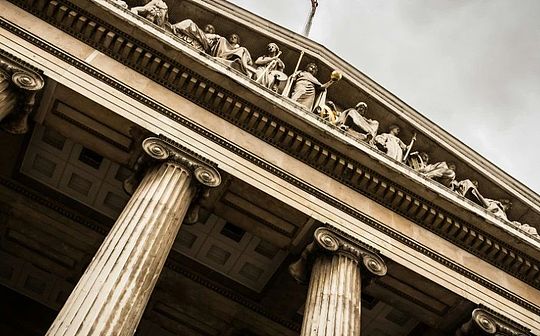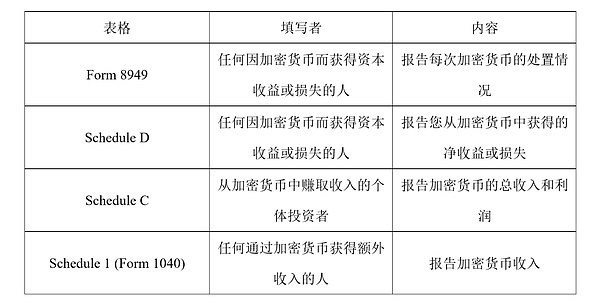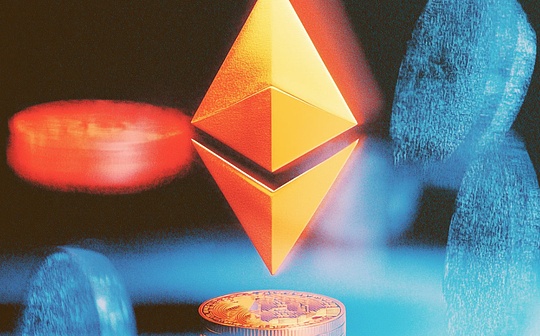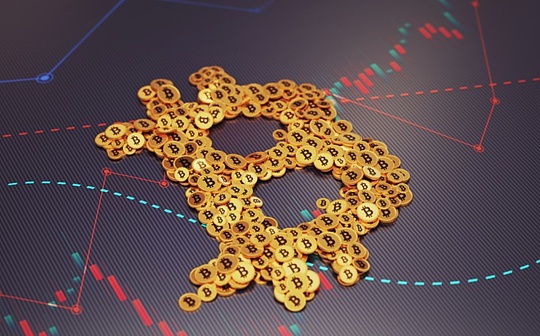
Author: taxdao-ray, taxdao-leslie
In October 2018, the encrypted platform Oyster Protocol encountered a serious crisis. Its founder Bruno Block (real name Amir Bruno Elmaani) used the vulnerability in the smart contract to cast a large number of new Oyster Pearl (PRL) tokens.And selling in the market has caused the PRL token prices to plummet.Elmaani was subsequently accused of tax evasion and fraud, and was sentenced to four years in prison on October 31 this year.
This article will outline the facts and backgrounds of BRUNO BLOCK fraud and tax evasion cases, analyze the legal basis for the US government to accuse its crime of tax evasion.Requirements are required to provide reference for the industry.
1 Facts and backgrounds of the case
1.1 Oyster Protocol and its business model
Oyster Protocol was initiated by the anonymous founder named Bruno Block in September 2017. It is a blockchain -based data storage platform., Privacy protection and low -cost data storage and transmission solutions.Oyster Protocol’s goal is to provide the website with decentralized storage and encryption services by using the free storage space and CPU of the user’s browser, and to provide a new source of income for the website owner.
Oyster Protocol’s native token is Pearl (PRL), which is an Etano -based ERC20 token that can be used to buy and sell data on Oyster Protocol.PRL can also be used to motivate nodes in the network to maintain the security and stability of the network.
The reason for the distribution of PRL is to achieve the operation and monetization of the data storage platform.Oyster Protocol enables their users to store and retrieve files through decentralization, anonymous and secure systems.On the one hand, as long as the Internet visits a website using Oyster Protocol, it can contribute a small part of their computing power to store data in distributed ledger.At the same time, users who need to use cloud storage can use the PRL tokens to pay data storage fees, and at the same time, they can also get PRL token rewards by participating in network maintenance.On the other hand, the website owner and content publisher can also obtain income by using Oyster Protocol.They only need to add a line of code to the website to use the computing resources provided by the user to store their content and obtain a certain percentage of sharing from the PRL tokens paid by the user.In this way, they do not need to rely on traditional advertising models, nor do they need to worry about advertising interceptors or malware.Oyster Protocol claims that the release of PRL is to create a win -win ecosystem, so that websites and users can benefit from data storage and achieve value exchange and incentive mechanisms through the PRL tokens.
1.2 Oyster Protocol development history
In October 2017, Oyster Protocol conducted its first token issuance (ICO) and raised about $ 3 million in funds.
In January 2018, Oyster Protocol released its test network to display its data storage and retrieval function.In April of the same year, Oyster Protocol released its main network and officially launched its data storage service.The main network also introduced a new token shell (SHL) to pay for network connection and decentralized applications (DAPP); the tokens were distributed to PRL holders through airdrops.The release of the main network marks that Oyster Protocol has changed from a concept to a available product, and has opened more possibilities for its future development.
In October 2018, Oyster Protocol encountered a serious crisis. Its founder Amir Bruno Elmaani (also known as Bruno Block) used the vulnerability in smart contracts to cast a large number of new PRL tokens and sell them in the market.As a result, the price of PRL tokens plummeted.Elmaani was subsequently accused of tax evasion and fraud, and was sentenced to four years in prison.
In November 2018, Oyster Protocol announced its renamed name OPACITY and launched a new token OPQ to replace the PRL tokens.OPACITY inherits the technology and vision of Oyster Protocol, but cuts off all the connections with Elmaani.OPACITY is still running and has a certain user foundation and community support.
2 Elmaani tax evasion and fraud case analysis
In addition to the criminal charges of the US government, Elmaani’s privately cast PRL and realize the civil lawsuit filed by the US Securities and Exchange Commission (SEC).The SEC prosecution stated that Elmaani sold and issued PRL through false commitments and deceptions, violating the corresponding clauses that ban fraud in the Securities Law and the Trading Law, and asked the court to confiscate its illegal income and impose civil fines.According to the existing US legal jurisprudence, [1] fraud also requires taxation, so the result of the civil lawsuit filed by the SEC does not affect the determination of taxable income on Elmaani. ThereforeLitigation analysis.
It should be noted that although according to relevant news reports, Elmaani has pleaded guilty to the judge on April 5, 2023, and the judge made a formal judgment on October 31 of that year.Go to the original text.The latest relevant legal documents that the author can retrieve is a “SLIP Copy” signed by West LAW updated judges on April 4, 2023, which is also a draft of judgment that has not been officially released.[3] Considering that Elmaani pleaded guilty the next day when the draft was released, according to the draft statement of the verdict, Elmaani did not raise objections to the main facts of the case.Comb..
2.1 Prosecutor’s investigation of ELMAANI
According to the prosecution (that is, the US government), the prosecution has evidence to prove that Elmaani’s following behavior is suspected of tax evasion and fraud:
First, from 2017 to 2018, Elmaani sold the PRL he owned in the US dollar through a series of intermediate steps.Elmaani exchanged a large number of PRLs held on the first cryptocurrency exchange (“Exchange-1”) to other cryptocurrencies.After that, Elmaani transferred Singaporean to the second cryptocurrency platform (“Exchange-2”) and exchanged it into a US dollar.
Second, in October 2018, Elmaani secretly issued millions of PRLs to sell it and retain the income (“exit the scam, Exit SCAM”).ELMAANI has created millions of new Pearl tokens for themselves by modifying the smart contract of PRL.At the same time, Elmaani adopted the same way to convert PRL into US dollars.In this process, Elmaani uses cryptocurrency services called “Mixers, or Tumblers”. In the future, it will be difficult to track from the transactions of multiple customers in the future.The account of family (including his spouse) has shifted cryptocurrencies and US dollars. These operations have the effect of concealing cryptocurrency trends.
Third, Elmaani took other measures to conceal its income, including trading precious metals.
The consequences of Elmaani’s series of transactions have caused PRL to almost become worthless.When Exchange-1 discovered the withdrawal of the scam, all the transactions of PRL were stopped, and PRL was delisted from its exchange two weeks after two weeks; the scam caused investors to lose a lot of funds.Two days after initiating the withdrawal scam, Elmaani said that part of his execution of the withdrawal scam was that “taxation was very annoying.”
2.2 Prosecutor’s allegations of Elmaani
U.S. government accuses: In 2017 and 2018, the defendant Amir Elmaani received millions of dollars in revenue, including the revenue obtained from a new type of cryptocurrency called Pearl to tokens he created, and he did not do almost all of these.Increase taxation.The US government’s indictment stated that Elmani evaded most of the income tax of the past two years through various means, including:
(A) The application form for false income tax application for the annual declaration of the annual application of the year has not been reported to the State Taxation Bureau a lot of income;
(b) In 2018, using the nominated person to receive part of the income that he did not report, and transferred the income to him;
(C) In 2017 and 2018, through the use of pseudonym operations and concealing the real identity, earn income income;
(D) In 2017 and 2018, they owned assets through anonymous entities and in the name of others;
(E) October in October 2018 obtained more unseen revenue to withdraw from the scam, at the same time tried to cover his participation in the scam; and,,,,,,,, to
(F) In 2017 and 2018, a large number of trading cryptocurrencies, cash and precious metals traded to cover up its uncomfortable revenue.
2.3 Elmaani defense
Elmaani did not deny that he had implemented several actions listed by the prosecutor and even admitted that he knew that he had taxpayers, but he still proposed three defense.First, Elmaani advocates that the aforementioned behavior is not for tax evasion, but just to avoid the review and tracking of Pearl investors, company members and members of Pearl community.Secondly, Elmaani claimed that he did not receive the tax bill sent by Exchange-2, so he didn’t know how much tax it would need to pay, and he could not pay taxes.Third, Elmaani proposed that he suffered from mental illness during the implementation of the aforementioned behavior, so he did not have the intention to evade taxes, let alone take relevant behavior for tax evasion.Interestingly, his explanation of this mental illness is that after setting up related scams, he began to worry about the collapse of the world financial system, so he hoped to transform the yacht he bought after profit, so as to be the family after the financial crisis arrived for the familyProvide economic protection.
2.4 Court judgment combing
Section 7201 (IRC §7201) of the “Internal Revenue Code (IRC)” in the United States stipulates that the Federal Crime of Tax Evass is felony in the United States.10,000 US dollars (the company’s maximum crime can be fined $ 500,000).The chief judges of the Elmaani case pointed out that if prosecutors want to prove that Elmaani constitutes a crime of tax evasion, it shall follow the jurisprudence of United States v. Josephberg.Debt; (2) the intention of tax evasion; (3) take positive actions.As mentioned earlier, Elmaani has recognized the establishment of the requirements (1), and although he denies his tax evasion intention, Elmaani still decided not to ask for objections (2) to objection.Therefore, the focus of the case eventually fell on the element (3), that is, whether Elmaani adopted positive tax evasion, which was mainly related to Elmaani’s third defense.
The prosecution refuted Elmaani’s defense in the form of an application.Prosecutors believe that psychological health evidence should be strictly restricted, and Elmaani’s mental illness evidence belongs to the “Impermissible Evidence that seeks to‘ excuse ’the crime”, that is, “the non -allowable evidence of seeking excuses”.The reason is that even if Elmaani does have the imagination and fear of the financial crisis, the end of the world, this spiritual problem will not conflict with the income tax, that is, Elmaani can have the intention of this kind of mental illness and tax evasion.Prosecutors’ refutation opinions were recognized by the court, and Elmaani’s defense was excluded by the court.In the end, the court believed that there was no evidence or explanation to help Elmaani get rid of the charges of tax evasion. Of course, this draft did not stimulate the specific trial results, and the detailed reasoning and demonstration will be released after the official referee documents.
In general, there is no fierce opinion during the trial of the Elmaani case, and there are no difficult theoretical problems, and there are no mismatched case facts.It reflects the characteristics of cryptocurrency tax crimes and the tendency of judicial trials.However, considering that when the Elmaani case occurred at the beginning of the ICO boom, the criminal cases of cryptocurrencies were rare.The land will be excavated from the US cryptocurrency tax system involved and an appropriate extension analysis will be performed.
3. Analysis of the tax -related content in this case
3.1 U.S. cryptocurrency tax system
The prerequisite for the taxation of cryptocurrency is to clarify the legal nature of cryptocurrencies. In this regard, different organizations in the United States and institutions in the United States hold different views.For example, SEC believes that cryptocurrencies are securities, and the US Commodity Futures Trading Commission (CFTC) has explained the nature of cryptocurrency derivatives to characterize cryptocurrencies into goods, while IRS defines cryptocurrencies as property.Since IRS is the competent tax authority, it should be based on the qualitative and regulations of IRS in terms of the cryptocurrency tax system.
The US cryptocurrency tax system mainly focuses on income tax and capital gains tax. Of course, in broad, capital gains taxes are also one of the income tax, but they are often established separately due to the consideration of legislative policies.IRS stipulated the taxation rules of cryptocurrencies in 2014 in 2014 in the “Notice 2014-21”, which requires the same tax system for cryptocurrencies as the same as property.Specifically, buying and holding cryptocurrencies does not require taxation; in terms of income tax, from AirDrop, decentralized financial lending (DEFI), cryptocurrencies in mining, and receiving cryptocurrencies as wages, remuneration, etc.Both need to pay income tax. When calculating the amount, the fair market value shall prevail; in terms of capital benefits, cryptocurrencies are converted to legal currencies, giving away cryptocurrencies, buying goods and services with cryptocurrenciesCapital gain tax, and on the basis of deducting costs, depending on the length of holding time, different tax rates are applied.[5]
However, the behavior of Elmaani in this case is special, because before he sells Pearl to token, he still has the behavior of casting Pearl token.It is not conclusive for the taxation of the sale of capital to pay for the sale of tokens, and the taxation of IRS for the casting tokens is not conclusive.In this regard, some opinions believe that the casting tokens and mining are created by calculating the creation of new digital assets, so the income of casting tokens should also be taxed.This article believes that whether the tokens obtained by casting are taxable income, it should be dependent on its market liquidity. When lack of liquidity, the real value of the tokens is difficult to determine and naturally cannot be determined.The tokens cast in the post -illegal regulations, because the token market had certain liquidity at the time, the value of these newly cast tokens was relatively clear, and it should be taxed by Elmaani.
3.2 U.S. Federal tax evasion crime
The three basic constituents that have been described in the previous article and the US federal tax evasion. These three elements seem to be simple. In fact, after the complement and improvement of many judicial cases, these three elements have a relatively rich connotation, some of which of them, some of whichThe content is that the draft of the court’s judgment of the case has not been mentioned, but it is crucial to understanding the case.
Essentials (1) Requires a large amount of tax debt (Substantial), that is, the tax amount paid by the taxpayer is far from being paid.There are three points to pay attention to.First, the income tax taxation obligations in the United States are based on the year, that is, the annual taxpayment obligations are independent. If the taxpayer has taxable income in three taxes years and the tax evasion behavior is implemented, the taxpayer will be will be will be will be will be will be will be will be will be will be will be will be will be will be will be will be will be will be will be will be will be will be will be will be will be will be will be will be will be will be will be will be will be being being procraced.The three crimes are accused of one, so the amount of tax evasion for three years shall not be merged.From this perspective, Elmaani may have violated federal tax evasion in 2017 and 2018.Second, the prosecutor of the federal tax evasion (usually the US federal government) does not need to prove the exact amount of tax evasion to prove the defendant, because the purpose of improving the punishment for tax evasion is not to recover the taxes of a specific number, but to punish tax evasion of tax evasionActions that violate the tax system.As for how to judge that an inaccurate number belongs to “a large number”, the US jurisprudence law does not establish an absolute standard or use a specific formula, but often by the jury depending on the specific situation, it is decided whether the evading tax is “a large amount”.Essence[6] To understand this, you can also understand why the judges, prosecutors or Elmaani did not investigate or defense the number of taxes in the draft of the aforementioned judgment.Third, mentioned earlier mentioned that the source of income does not affect its taxable, illegal income and other illegal income of fraud belongs to the scope of income tax.[7] Therefore, regardless of the verdict of the SEC complaint about Elmaani Securities fraud cases, the Elmaani tax evasion case will not be affected.
Essentials (2) require the defendant to have the intention of implementing tax evasion, and there are many standards in how to determine “intentional”.First of all, “Good Motive” cannot be argued for “intentional”, and prosecutors do not have to prove that there is some evil and negative motivation behind “intentional”.Intentional can violate the known legal obligations.[8] Second, intentional ignorance should also be identified as intentional.The so -called intentional ignorance means that the taxpayer knows that he is not clear about the relevant tax regulations, but it is still paid in taxation in this ignorance state.However, there are exceptions of this situation. Under the condition of unknown and ambiguity of the tax law itself, the ignorance and misunderstanding of the law can be used as an effective debate.[9] Finally, the decline or loss of will can also be an effective debate, provided that this kind of will problem is directly linked to criminal behavior, otherwise, as the prosecutor’s claims in this case, some spiritual spirit that has nothing to do with taxation has nothing to do with taxes.Diseases cannot be used as a reason for exempting tax evasion.
Essentials (3) Require active behaviors for the purpose of evasion of taxes. There are two major forms of expressions in these behaviors: evading evaluation and evasion payment.After tax assessment, the property is hidden to avoid taxes, and simple taxpayers are not the target of federal tax evasion.Elmaani adopts the behavior of evasion of evaluation, which is also the most common tax evasion behavior. If Elmaani does not adopt a false tax declaration form, anonymous operation and transaction, but only refuses to pay taxes after selling tokens.He was punishable as a deliberate and non -tax crime that was deliberately not taxed by the IRC section 2703, not the felony of federal tax evasion.
3.3 The United States’ application for cryptocurrency taxes
The U.S. cryptocurrency tax does not have a separate application content and application procedure. The relevant declaration is still under the framework of income tax and capital gains tax.Large, this performance is directly from the two angles.The so -called direct angle means that IRS has increased tax collection and management to cryptocurrency traders.For example, since 2020, IRS’s 1040 tax forms have begun to include “do you get any economic benefits of any virtual currency by receiving, selling, sending, transactions, or other virtual currencies during the period of 2021?”For another example, IRS has added related budgets, and invested more manpower and financial resources to improve law enforcement of cryptocurrency traders.For another example, as the new regulations take effect in 2024, people who have received more than $ 10,000 or more in transactions or operations have the obligation to report to IRS.From an indirect perspective, IRS mainly obtains tax -related information through pressure on the centralized exchange (CEX).Because the KYC verification must be completed after CEX registration, even if the taxpayer does not actively fill in the cryptocurrency transaction tax information, CEX will also use the annual tax form of the year, and it will also indirectly provide users with IRS through the 1099 formula.Condition.In addition, IRS is already using the blockchain analysis technology to track related transaction information. If the relevant address has interacted with some centralized exchanges, then the person’s information and taxation may also be arrested.
Specifically, when applying for cryptocurrency tax, the taxpayer may need to fill in the following form:

In addition, taxpayers may also receive 1099-K, 1099-Misc or 1099-B form from CEX, which depends on exchanges.However, the 1099-K is used to report the tax situation of personal transactions like the table listed above, but only for IRS to understand the transaction information. The same is true for 1099-MISC and 1099-B form.However, these three forms are not completely suitable for cryptocurrency transactions, so IRS is planning to launch 1099-DA forms that are more in line with cryptocurrency transactions.
4. Conclusion
In sharp contrast to the vigorous and rapid development of cryptocurrencies, it is a relatively lagging and lack of legal system, especially for fraudulent behaviors and tax issues in cryptocurrencies trading.Regulations.The Elmaani case involves both securities civil fraud and tax criminal criminal crimes. The former harmed the legitimate rights and interests of the majority of investors, while the latter endangered the national fiscal revenue.This article focuses on the US federal tax evasion involved in the ELMAANI case, and analyzes the constituent elements of tax evasion, and analyzes the US cryptocurrency tax system and its specific declaration requirements.The professionalism of the work can only be selected for the key points. As for the more theoretical and practical issues of cryptocurrency transactions, it will be discussed in the future.
[1] See Moore v. United States, 412 F2D 974, 978 (5th Cir. 1969). See Also United States v. Wright, 798 fed. Appx. 849, 857 (6th cir. 2019).
[2] SEE IRS. (2023, October 31). Cryptocurrency Founder “Bruno Block” Sentenced to Four Years in Prison. Retrieve February 4, 2024, from https: //www.irt.irt.gs.IRS.IRS.G OV/Compliance/Criminal-IInvestigation/Cryptocurrency-Founder-BRUNO-BLOCK-Sentenced-TO-FOURS-IN-PRISON.
[3] See United States of American, V. Amir Elmaani, 131 A. F. T. R. 2D 2023-1308 (20 CR. 661 (CM)).
[4] See United States v. Josephberg, 562 F.3D 478, 488 (2D CIR. 2009).
[5] See Overview of the U.S. encryption tax system | by Taiwan | Cointime. (N.D.). Cointime. Https://cn.cointime.ai/news/mei-jia-shui-zhi-du-gai-lan-35353
[6] See United States v. Cunningham, 723 F2D 217, 230–231 (2D CIR. 1983), Cert. Denied, 466 US 951 (1984).
[7] See United States v. Stafoff, 260 US 477, 480 (1923). See Also United States v. Mueller, 74 F3D 1152, 1155 (11th cir. 1996).
[8] SEE United States v. Phipps, 595 F3D 243, 247 (5th cir. 2010)
[9] See Connally v. General Construction Co., 269 US 385, 391 (1926); mcboyle v. US, 283 us 25, 27 (1931).








